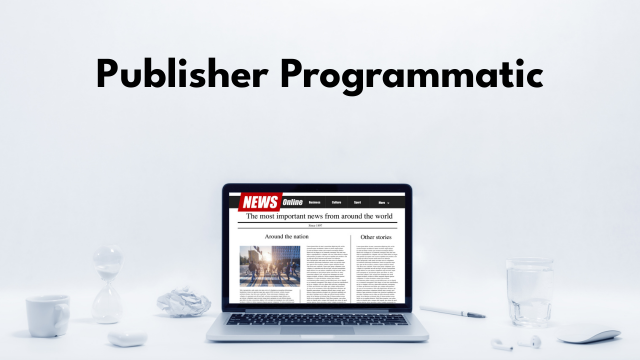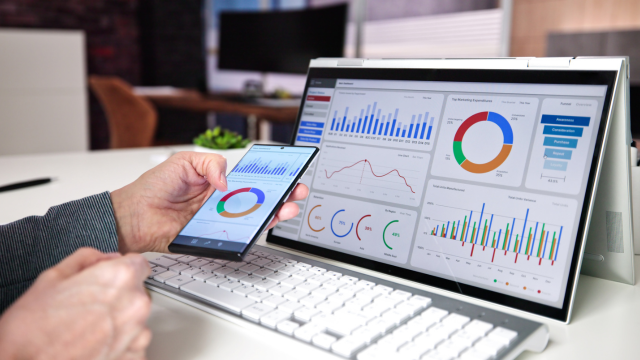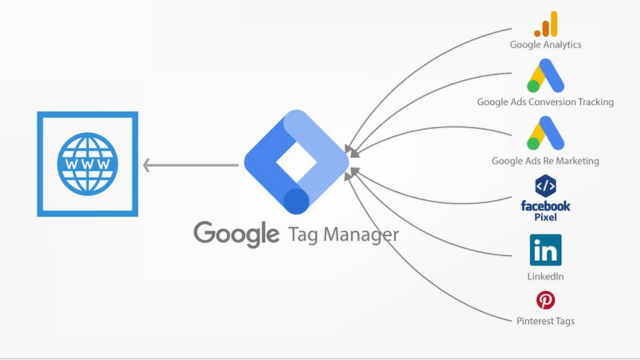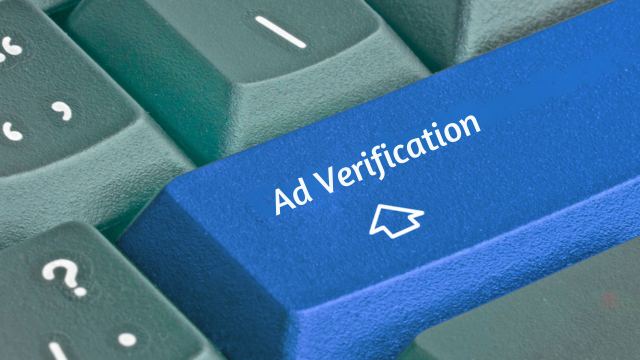Programmatic advertising has become the new norm for publishers, redefining how ad space is bought and sold. It’s faster, smarter, and more efficient than traditional methods, empowering publishers to optimize revenue and streamline processes. If terms like real-time bidding (RTB), supply-side platform (SSP), or header bidding sound daunting, don’t worry. By the end of this article, you’ll know exactly how these tools work—and how to make programmatic advertising a true game-changer for your business.
The Old Way vs. The New Way
Manual Ad Sales – Slow and Painful
Imagine this: you’re a publisher trying to fill ad spots on your website. To make it happen, you have to call advertisers one by one, negotiate rates, and send around endless spreadsheets. Once deals are finalized—sometimes weeks later—you need to manually insert the creatives.
It worked, but slowly. You’d often end up with unsold inventory and wasted time. For publishers aiming to grow revenue efficiently, the manual approach wasn’t sustainable.
Enter Programmatic – Fast & Smart
Now, enter programmatic advertising—a system designed to automate and optimize ad sales. Powered by software and AI, it connects publishers to advertisers in milliseconds. Instead of waiting weeks to close a deal, your programmatic tech stack takes your ad space, auctions it off to the highest bidder in real time, and displays the winning ad instantly.
The result? Publishers reap the benefits of speed, higher fill rates, and optimized revenue.
How Publisher Programmatic Actually Works
Ever wondered what happens behind the scenes when someone visits your site? Here’s how programmatic advertising works, step by step.
Page Loads → Auction Starts
When a visitor lands on your site, your supply-side platform (SSP) springs into action. The SSP registers the available ad slots on your page and sends this information to an ad exchange. Think of it as listing your inventory in a bustling digital marketplace. What’s remarkable is that this entire process takes less than 100 milliseconds.
Ads Get Bid On via RTB
Advertisers use demand-side platforms (DSPs) to participate in real-time bidding (RTB). The DSP evaluates the available ad inventory and bids on impressions that best align with the advertiser’s target audience. Bids are processed in—again—a fraction of a second.
Winner Takes the Slot
Once the auction ends, the highest bidder wins. Their ad creative appears on the visitor’s screen, and you, the publisher, earn revenue from the transaction. The entire process, from page load to ad display, happens faster than the blink of an eye.
The Main Tools in the Arsenal
Programmatic advertising wouldn’t be possible without a robust set of tools. Here are the key components publishers rely on to run successful campaigns:
Supply-Side Platforms (SSPs)
SSPs are every publisher’s best friend. They connect your programmatic ad inventory to ad exchanges, optimizing for both price and fill rate. With the right SSP, you gain real-time control over what’s happening with your inventory and can set parameters to ensure your ads align with your goals.
Header Bidding
Say goodbye to the old “waterfall” method. Header bidding lets multiple buyers bid on your ad inventory simultaneously, getting you the best possible price for each impression. This method boosts competition among advertisers, meaning higher earnings for you.
Ad Exchanges
Ad exchanges are the virtual marketplaces where SSPs and DSPs meet to facilitate transactions. They’re the intermediaries ensuring that your ad inventory is matched with the right buyers, helping publishers access a diverse pool of advertisers and maximize revenue.
Why Publishers Love Programmatic
What makes programmatic advertising such a hit among publishers? Here are just a few reasons:
Better Revenue & Fill Rate
More competition equals higher bids. And thanks to smarter tools like header bidding, your inventory fills faster. Gone are the days of unsold ad slots dragging down earnings.
Data-Driven Optimization
With programmatic advertising, you gain access to real-time data on your inventory. You can see which ads perform well, adjust pricing, and make data-driven decisions to improve results. For example, tracking key metrics like CPMs and viewability helps fine-tune your strategy over time.
Efficiency & Scale
Because everything is automated—bidding, placement, and reporting—you save countless hours. That means more time to focus on producing great content and growing your audience. Programmatic also enables you to scale because it works seamlessly across websites, mobile apps, and even emerging formats like programmatic digital out-of-home (PDOOH).
Pitfalls to Watch Out For
Despite its many advantages, programmatic advertising isn’t without challenges. Here are some potential pitfalls—and how to avoid them.
Ad Fraud & Low-Quality Inventory
Not every buyer on the marketplace has the best intentions. Bots and low-quality traffic can waste ad dollars. To combat ad fraud, publishers should collaborate with reputable SSPs and use tools that filter out fake traffic.
Brand-Safety Risks
Imagine running an ad for a family-friendly product only to have it appear on a site riddled with offensive content. Not a good look, right? Brand safety measures, such as whitelists, blocklists, and contextual targeting, ensure your ads appear in environments that reflect well on all parties.
Setup Complexity
Building your programmatic stack—choosing an SSP, setting up header bidding, and configuring ads.txt—can feel overwhelming at first. But with proper planning and the right tools, the long-term benefits far outweigh the initial effort.
Best Practices for Publishers
Want to succeed in the programmatic ecosystem? Follow these best practices to keep your campaigns running smoothly.
Implement ads.txt
A must-have for every publisher. This simple file ensures advertisers know exactly who’s authorized to sell your ad inventory. It adds a layer of transparency and helps prevent fraud.
Use Header Bidding
If you’re not using header bidding yet, now’s the time. By allowing multiple buyers to bid simultaneously, you can maximize revenue on each impression.
Enforce Brand Safety & Use Blocklists
Protect your reputation by creating a list of sites and content types where your ads should never appear. A focus on brand safety builds trust with advertisers and keeps relationships strong.
Optimize via Data
Pay close attention to key performance indicators (KPIs) like fill rate, CPM, and viewability. These insights can help you identify opportunities to improve performance month over month.
The Future of Publisher Programmatic
The programmatic advertising landscape is continually evolving. Here’s what’s on the horizon:
AI & Contextual Advertising
AI is getting better at analyzing page content to match ads with relevant context. This enables smarter placements, especially as privacy concerns grow and third-party cookies are phased out.
DOOH (Programmatic Digital Out-of-Home)
Expect to see programmatic digital out-of-home (PDOOH)—like digital billboards and screens—take off in the near future. Utilizing real-time auctions, they’ll bring programmatic efficiency to the physical world.
Privacy & CCPA/GDPR Workarounds
As privacy regulations tighten, context-focused and privacy-first solutions will become even more critical. Publishers will need to align their strategies with evolving privacy laws to maintain audience trust.
First Steps to Get Started
If you’re ready to jump into programmatic, here’s how to get started:
- Choose an SSP and Set Up ads.txt
Your SSP will be your gateway to programmatic success. Don’t forget to implement ads.txt to establish trust with buyers.
- Add Header Bidding Wrapper
Boost competition for your ad slots with a header bidding setup that invites multiple buyers at once.
- Establish Brand-Safety Rules
Use blocklists, whitelists, and contextual advertising tools to maintain safe and appropriate placements.
- Track KPIs Regularly
Monitor CPMs, fill rate, viewability, and other performance metrics to ensure your efforts drive results.
- Optimize for Better Performance Monthly
Use your data to make incremental improvements every month. Over time, small changes add up to significant gains.
Final Thoughts
Programmatic advertising for publishers isn’t just a trend—it’s a powerful tool shaping the future of digital advertising. From boosting revenue to enabling smarter decision-making, it’s clear why publishers are leaning into the programmatic ecosystem. Curious to share your experiences or tips? Drop a comment below or subscribe to our newsletter for even more insights!




